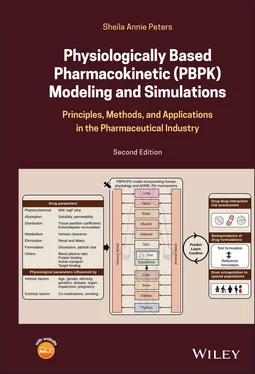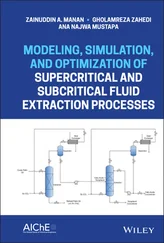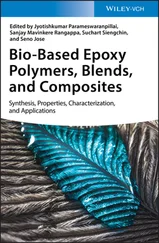Sheila Annie Peters - Physiologically Based Pharmacokinetic (PBPK) Modeling and Simulations
Здесь есть возможность читать онлайн «Sheila Annie Peters - Physiologically Based Pharmacokinetic (PBPK) Modeling and Simulations» — ознакомительный отрывок электронной книги совершенно бесплатно, а после прочтения отрывка купить полную версию. В некоторых случаях можно слушать аудио, скачать через торрент в формате fb2 и присутствует краткое содержание. Жанр: unrecognised, на английском языке. Описание произведения, (предисловие) а так же отзывы посетителей доступны на портале библиотеки ЛибКат.
- Название:Physiologically Based Pharmacokinetic (PBPK) Modeling and Simulations
- Автор:
- Жанр:
- Год:неизвестен
- ISBN:нет данных
- Рейтинг книги:5 / 5. Голосов: 1
-
Избранное:Добавить в избранное
- Отзывы:
-
Ваша оценка:
- 100
- 1
- 2
- 3
- 4
- 5
Physiologically Based Pharmacokinetic (PBPK) Modeling and Simulations: краткое содержание, описание и аннотация
Предлагаем к чтению аннотацию, описание, краткое содержание или предисловие (зависит от того, что написал сам автор книги «Physiologically Based Pharmacokinetic (PBPK) Modeling and Simulations»). Если вы не нашли необходимую информацию о книге — напишите в комментариях, мы постараемся отыскать её.
The first book dedicated to the emerging field of physiologically based pharmacokinetic modeling (PBPK) Physiologically Based Pharmacokinetic (PBPK) Modelling and Simulations: Principles, Methods, and Applications in the Pharma Industry
Physiologically Based Pharmacokinetic (PBPK) Modeling and Simulations: Principles, Methods, and Applications in the Pharmaceutical Industry, Second Edition
Physiologically Based Pharmacokinetic (PBPK) Modeling and Simulations — читать онлайн ознакомительный отрывок
Ниже представлен текст книги, разбитый по страницам. Система сохранения места последней прочитанной страницы, позволяет с удобством читать онлайн бесплатно книгу «Physiologically Based Pharmacokinetic (PBPK) Modeling and Simulations», без необходимости каждый раз заново искать на чём Вы остановились. Поставьте закладку, и сможете в любой момент перейти на страницу, на которой закончили чтение.
Интервал:
Закладка:
12 APPENDICESAPPENDIX A: PHYSIOLOGICAL PARAMETERS IN PRECLINICAL SPECIES Appendix B: Human References
13 INDEX
14 END USER LICENSE AGREEMENT
List of Tables
1 Chapter 1 TABLE 1.1. Plasma proteins. TABLE 1.2. Role of transporters in ADME. TABLE 1.3. Impact of changes in biological parameters on pharmacokinetic pr... TABLE 1.4. Optimization of pharmacokinetics – what? how? and why? (Source: ... TABLE 1.5. Classes of Pharmacological Targets TABLE 1.6. Examples of different types of biomarkers.
2 Chapter 2 TABLE 2.1. Overview of key enzymes and transporters at different sites rele...
3 Chapter 3 TABLE 3.1. Parameter estimation in noncompartmental and compartmental analy... TABLE 3.2. Influence of different parameters on the 4 different phases of a... TABLE 3.3. Typical parameters in a TMDD model and their translation to huma... TABLE 3.4. TMDD model approximations TABLE 3.5. Derivation of initial estimates of IC 50(or EC 50), k in, and k TABLE 3.6. Examples of tolerance models.
4 Chapter 4TABLE 4.1. Influx or uptake transporter families.TABLE 4.2. Abundance of drug‐metabolizing enzymes (DME) in the human gut.TABLE 4.3. SI secretions.TABLE 4.4. Physiological and anatomical features of pre‐clinical species co...TABLE 4.5. Formulations for drugs with different physicochemical profiles.
5 Chapter 5TABLE 5.1. Drugs confined to different physiological volumes.TABLE 5.2. Methods to determine the unbound volume, rate, and extent of dru...
6 Chapter 6TABLE 6.1. In vitro models for assessment of hepatic metabolism and hepatobiliary...
7 Chapter 8TABLE 8.1. Human immunoglobulins.TABLE 8.2. PK of therapeutic proteins and antibodies.TABLE 8.3. Physiological and compound dependent parameters.
8 Chapter 9TABLE 9.1. Sources of uncertainty in drug‐ and system‐related parameters.TABLE 9.2. Factors contributing to variability in physiological and anatomi...
9 Chapter 10TABLE 10.1. Different stages of preclinical and clinical development.
10 Chapter 12TABLE 12.1 Signature discrepancies of simulated and observed PK profiles an...TABLE 12.2 Impact of identifying mechanisms underlying PK profiles in drug ...
11 Chapter 14TABLE 14.1 Key questions related to drug–drug interactions during clinical ...TABLE 14.2 Study considerations for dedicated clinical drug interaction stu...
12 Chapter 15TABLE 15.1 Factors contributing to differences in absorption, distribution,...
13 Chapter 16TABLE 16.1 Classification of hepatic function based on Child‐Pugh score a.TABLE 16.2 Classification of renal function based on estimated glomerular f...
14 Chapter 17TABLE 17.1 Potential problems with poor solubility drugs and their conseque...TABLE 17.2 Factors impacting drug absorption.TABLE 17.3 Criteria on excipient and in vitro dissolution to qualify for a ...
15 Chapter 18TABLE 18.1 Comparison of terminology in risk‐informed evidentiary framework...
16 Case Study 1TABLE S1.1 Model parameters for the investigational drug.
17 Case Study 2TABLE S2.1 Model parameters for the investigational drug. Modified from Pet...
18 Case Study 3TABLE S3.1 Model parameters for the investigational drug. Modified from Pet...
19 Case Study 4TABLE S4.1 Model parameters for ciprofloxacin.TABLE S4.2 Bacterial growth model.TABLE S4.3 Adaptive resistance.
20 Case Study 5TABLE S5.1 Compound parameters for the perpetrators and victim of drug inte...
21 Case Study 6TABLE S6.1 Model parameters for Rifampicin and Midazolam.TABLE S6.2 Dosing scenarios based on observed DDI studies.
22 Case Study 7TABLE S7.1 Model parameters for risperidone and 9‐hydroxyrisperidone (Knell...TABLE S7.2 Phenotype‐related input parameter for CYP2D6 and CYP3A4 activity...TABLE S7.3 Population characteristics based on observed risperidone study b...
23 Case Study 8TABLE S8.1 Physiological changes in pediatric population.TABLE S8.2 Morphine – compound‐related model input parameters.TABLE S8.3 Morphine: clinical trial demographics.
24 Case Study 9TABLE S9.1 Model parameters for metronidazole by Dallmann et al. (2018).TABLE S9.2 Dosing scenarios and population characteristics based on observe...
25 Case Study 10TABLE S10.1 Pathophysiological alterations in liver cirrhosis (Edginton and...TABLE S10.2 Model parameters for midazolam and lidocaine.TABLE S10.3 Dosing scenarios and population characteristics based on observ...
26 Case Study 11TABLE S11.1 Pathophysiological alterations in chronic kidney disease. Schmu...TABLE S11.2 Model parameters for gentamicin.TABLE S11.3 Gentamicin dosing scenarios in CKD patients simulated by PBPK m...
27 Case Study 12TABLE S12.1 Compound parameters for paracetamol.TABLE S12.2 Dosing scenarios and types of formulations.
List of Illustrations
1 Chapter 1 Figure 1.1. Temporal changes in drug concentrations for (a) zero‐order and (... Figure 1.2. Linear (a) and semilogarithmic (b) plots of drug concentrations ... Figure 1.3. Rate of an enzyme‐catalyzed reaction as a function of substrate ... Figure 1.4. Renal elimination of a drug: glomerular filtration, active tubul... Figure 1.5. Entero‐hepatic recirculation of a parent drug or a metabolite. Figure 1.6. Oral pharmacokinetic profiles. (a) Maximum systemic concentratio... Figure 1.7. (a) Uptake and efflux drug transporters in intestine, liver, kid... Figure 1.8. Steady state concentrations following (a) constant rate infusion... Figure 1.9. Limiting conditions on metabolite disposition. (a) Formation‐lim... Figure 1.10. An orally administered drug or a prodrug may undergo first‐pass... Figure 1.11. Sources of variability in the physiological parameters that imp... Figure 1.12. Concentration–response curve of an agonist in (a) linear (b) lo... Figure 1.13. Concentration–response curves of a partial agonist and a full a... Figure 1.14. Target classes. (a) G‐protein‐coupled receptor (GPCR) (b) tyros... Figure 1.15. Biomarker classification (Types 0–6) and typical preclinical, c... Figure 1.16. Characteristics of an ideal biomarker. (a) A biomarker with ide... Figure 1.17. Pharmacodynamic biomarkers. (a) Types of biomarkers, assays for...
2 Chapter 2 Figure 2.1. Potential sources of DDI risks for a new molecular entity. Figure 2.2. Perpetrator and victim properties impacting drug interaction ris...
3 Chapter 3 Figure 3.1. Schematic representation of two‐compartment target‐mediated drug... Figure 3.2. Full Target‐Mediated Drug Disposition (TMDD) model with 1 compar... Figure 3.3. Linear and nonlinear phases of TMDD profiles at different doses.... Figure 3.4. Population pharmacokinetic (popPK) principles. (a) Illustration ... Figure 3.5. Pharmacokinetic (PK)/pharmacodynamic (PD) models: Irreversible b... Figure 3.6. Typical PK/PD profiles for different types of PD mechanisms. (a)... Figure 3.7. Submodels describing the concentration–response curve of an agon... Figure 3.8. Receptor occupancy and drug response as a function of drug conce... Figure 3.9. Indirect response model 1. The plot in the figure has been repri... Figure 3.10 Indirect response model 2. The plot in the figure has been repri... Figure 3.11 Indirect response model 3. The activation of the β2 adrenergic r... Figure 3.12. Indirect response model 4. The plot in the figure has been repr... Figure 3.13. Static approaches to characterizing antitumor activity in precl... Figure 3.14. PK/efficacy (or exposure/response) model. The two vertical line... Figure 3.15. Cytotoxic and cytostatic dynamic mathematical models to describ... Figure 3.16. Translation of preclinical PK/efficacy model to human involves ... Figure 3.17. Translation of PK/PD/efficacy. (a) Efficacious dose is identifi... Figure 3.18. Translation of preclinical pharmacokinetic (PK)/pharmacodynamic... Figure 3.19. Impact of half‐life ( t 1/2) on the choice of PK metric. As t Figure 3.20. Risk of assuming C average,SSas the efficacious concentratio... Figure 3.21. Therapeutic window. (a) A once daily dosing of an oral drug sho... Figure 3.22. Types of inhibitor concentrations used as input in static equat...Figure 3.23. A comparison of inhibitor concentrations in the liver and in th...
Читать дальшеИнтервал:
Закладка:
Похожие книги на «Physiologically Based Pharmacokinetic (PBPK) Modeling and Simulations»
Представляем Вашему вниманию похожие книги на «Physiologically Based Pharmacokinetic (PBPK) Modeling and Simulations» списком для выбора. Мы отобрали схожую по названию и смыслу литературу в надежде предоставить читателям больше вариантов отыскать новые, интересные, ещё непрочитанные произведения.
Обсуждение, отзывы о книге «Physiologically Based Pharmacokinetic (PBPK) Modeling and Simulations» и просто собственные мнения читателей. Оставьте ваши комментарии, напишите, что Вы думаете о произведении, его смысле или главных героях. Укажите что конкретно понравилось, а что нет, и почему Вы так считаете.












